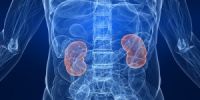Publication
Article
Surgical Rounds®
Paired Donor Program Opens Doors for More Kidney Transplants
Author(s):
While kidney paired donation (KPD) is not a new concept, it may be the most promising avenue for increasing organ availability.

At any given moment, approximately 100,000 Americans are waiting for a kidney transplant, and most of those patients have blood type or immunologic incompatibilities with available living donors. As a result, one out of every 3 living donor volunteers is incompatible with his or her designated recipient.
Kidney paired donation (KPD) offers a solution to this kidney shortage. While it is not a new concept, it may be the most promising avenue for increasing organ availability.
In 1986, renowned transplant surgeon Felix Rapaport proposed an international registry that would help eligible, willing living donors who are blood type-incompatible transplant their kidneys via exchange. In this model, donors undergo simultaneous nephrectomy, a courier transports the donated organs, and then recipients immediately undergo implantation.
Although an international registry has been brought to fruition, some transplant centers use a scaled-back version of the model. South Korea, the Netherlands, and the United States have established national exchange programs, and when these programs work, they flourish. In many cases, the exchange chain involves up to 30 pairs of kidneys, which expands the original concept.
Two clinicians from New York-Presbyterian/Weill Cornell Medical Center recently published a paper describing the growth of the KPD concept and its various iterations.
The researchers found:
- List exchange allows incompatible donors in donor-recipient pairs to donate kidneys to the deceased donor waiting list. In exchange, intended recipients receive priority on the deceased donor waiting list. However, critics have raised issues of fairness to others on the waiting list.
- Domino paired donation (DPD), also known as “closed” chain donation, starts when altruistic or Good Samaritan donors provide a kidney with no designated recipient. The altruistic donor’s kidney starts a chain of transplants, wherein the kidney recipient’s intended yet incompatible donor is matched to a compatible recipient, and the chain continues until there are no more matches. Two or 3 patients typically benefit from DPD.
- In the US, 7 programs have small-scale KPD programs, though the Methodist San Antonio utilizes its own single-institution KPD program.
The authors also documented that KPD-facilitated transplants and traditional living donor kidney transplants have similar outcomes.
Though the researchers discussed KPD’s ethical issues and controversies — such as the difficulty for donors to back out of donation, disadvantages to O blood type recipients who represent 52% of patients on the donor list, organ quality, payment structures, and the complication of simultaneous and nonsimultaneous surgeries — they reviewed potential solutions, as well. For KPD to be successful, transplant centers must allocate dedicated staff to solve the logistic, infrastructure, resource, and financial problems associated with the program.






